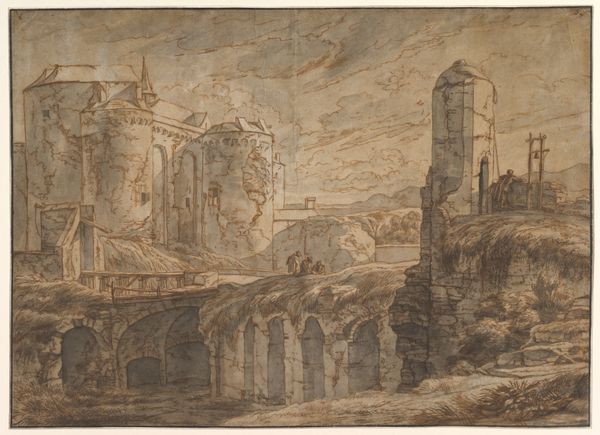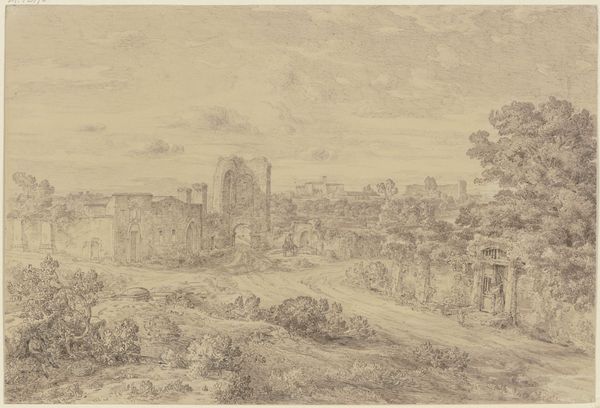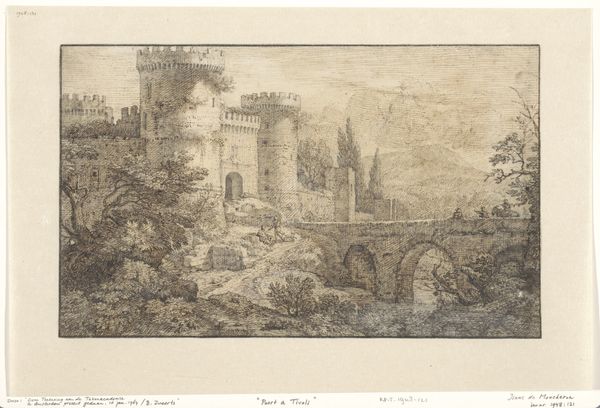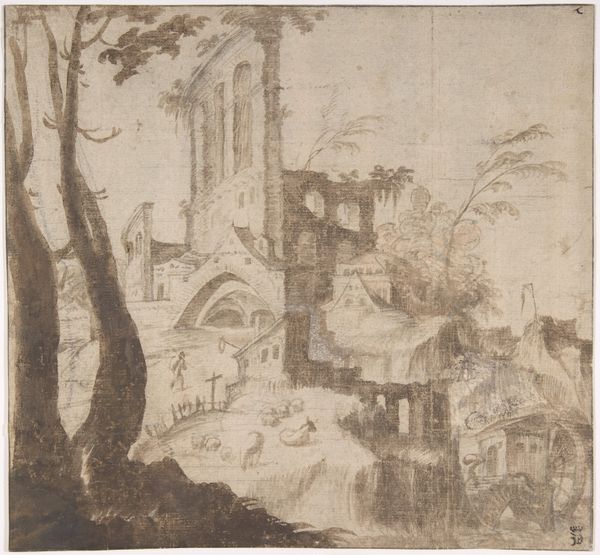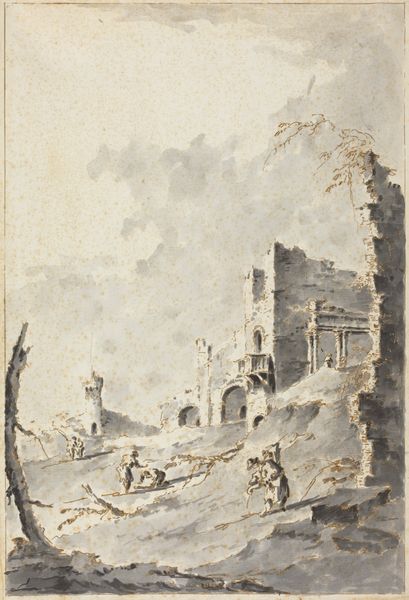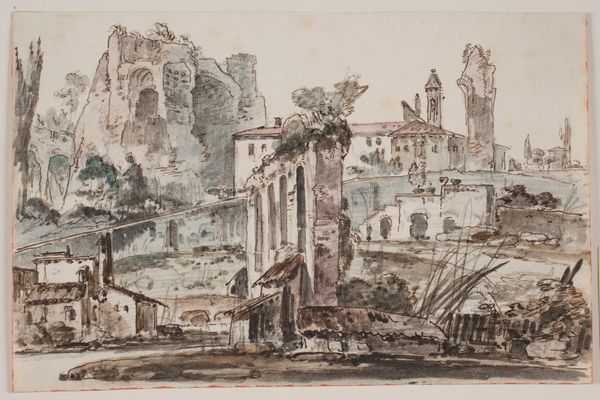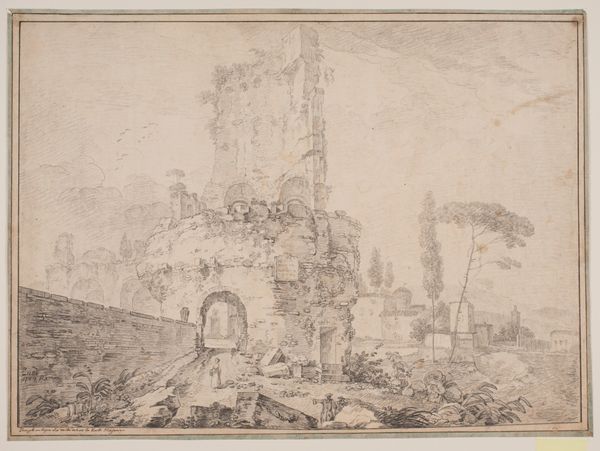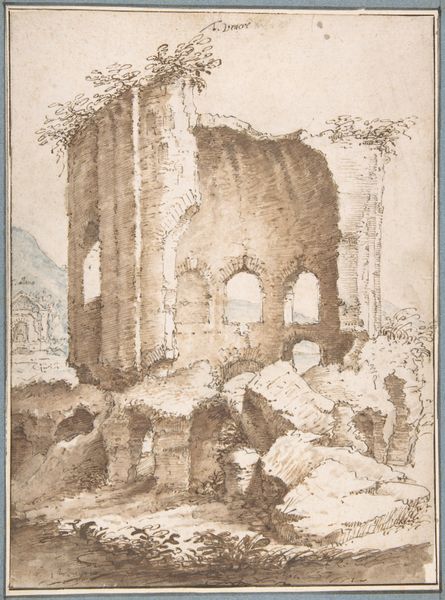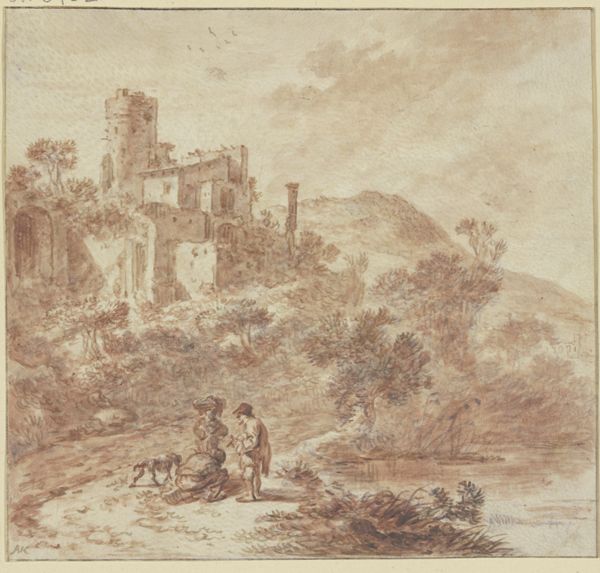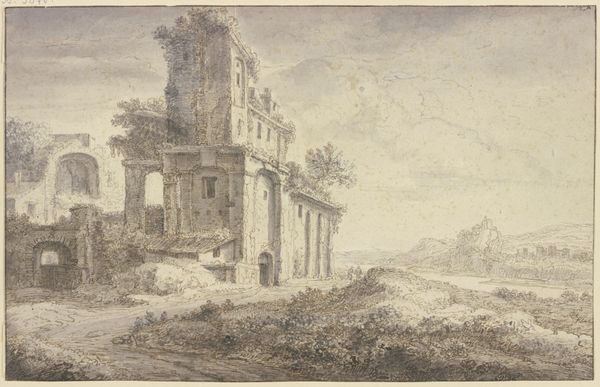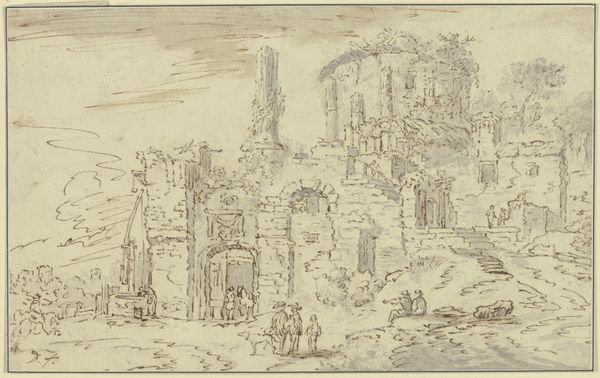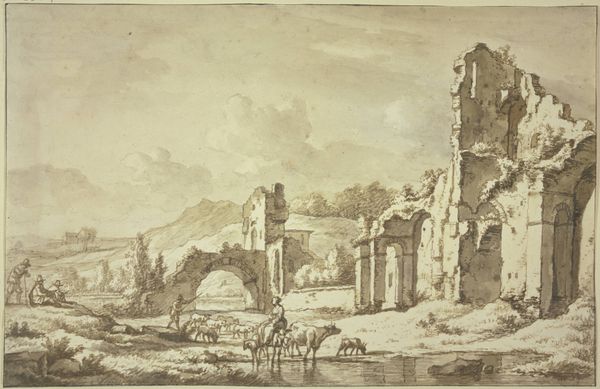
drawing, watercolor
#
drawing
#
landscape
#
classical-realism
#
mannerism
#
romanesque
#
watercolor
#
coloured pencil
#
history-painting
Dimensions: image (diameter): 19.8 cm (7 13/16 in.)
Copyright: National Gallery of Art: CC0 1.0
Curator: Pieter Stevens' "Travellers among Roman Ruins" immediately strikes me with its melancholic mood. The subtle watercolor hues, combined with the ruined structures, create a powerful sense of time and loss. Editor: There's certainly a tangible quality to the ruins, and the technique showcases process. The evident layers of wash show the hand of the artist, making the passage of time feel incredibly real. Curator: Absolutely. This piece allows us to reflect on the social and political aspects of decay and ruin within art, situating us in a moment of observation, questioning what this devastation represented to people throughout various periods. Did they mourn it, exploit it, or even attempt to glorify this type of wreckage? Editor: A great point! Furthermore, how did Pieter Stevens himself work with the materials available? Was he invested in any other form of labor connected to landscape as he worked, and how did this work intersect? Were they travelers commissioned for Stevens' vision of Rome's history? Curator: And looking at the positioning of the travelers gives the piece added complexity: these subjects were clearly wealthy individuals or aristocrats taking advantage of some type of Grand Tour. It prompts a conversation about wealth and access in art. How did socio-economic realities allow certain privileged groups to engage with art and historical sites, in contrast with local working-class residents that might actually construct artwork like this? Editor: And if Stevens relied on commissions, his role and artistic freedom became commodities, raising critical considerations about production and social context! I would also add the paper selection shows dedication and vision for form—did this support specific labor demands at the time as well? Curator: I like your questions regarding labor and social circumstances; you are right that the role of artistry involves not just vision, but tangible human effort! This exploration of time, combined with material reality and the realities of different social classes, can truly give us a better awareness and richer appreciation for our world. Editor: Well, understanding production practices and the work put in certainly reframes a painting. With his focus on landscape and human subjects interacting with history, Pieter Stevens gives us many unique viewpoints that question artistic value and commodification.
Comments
No comments
Be the first to comment and join the conversation on the ultimate creative platform.
